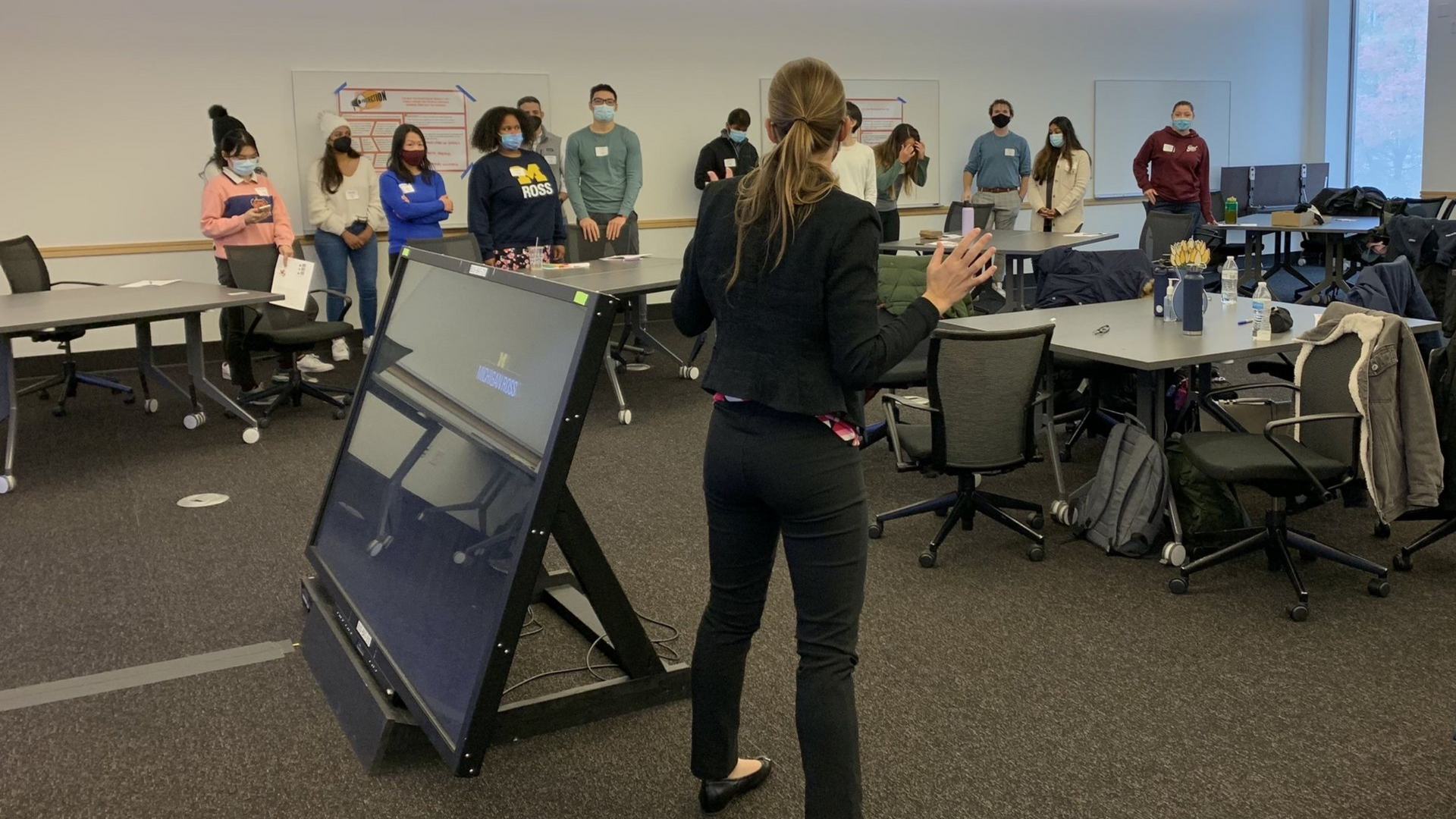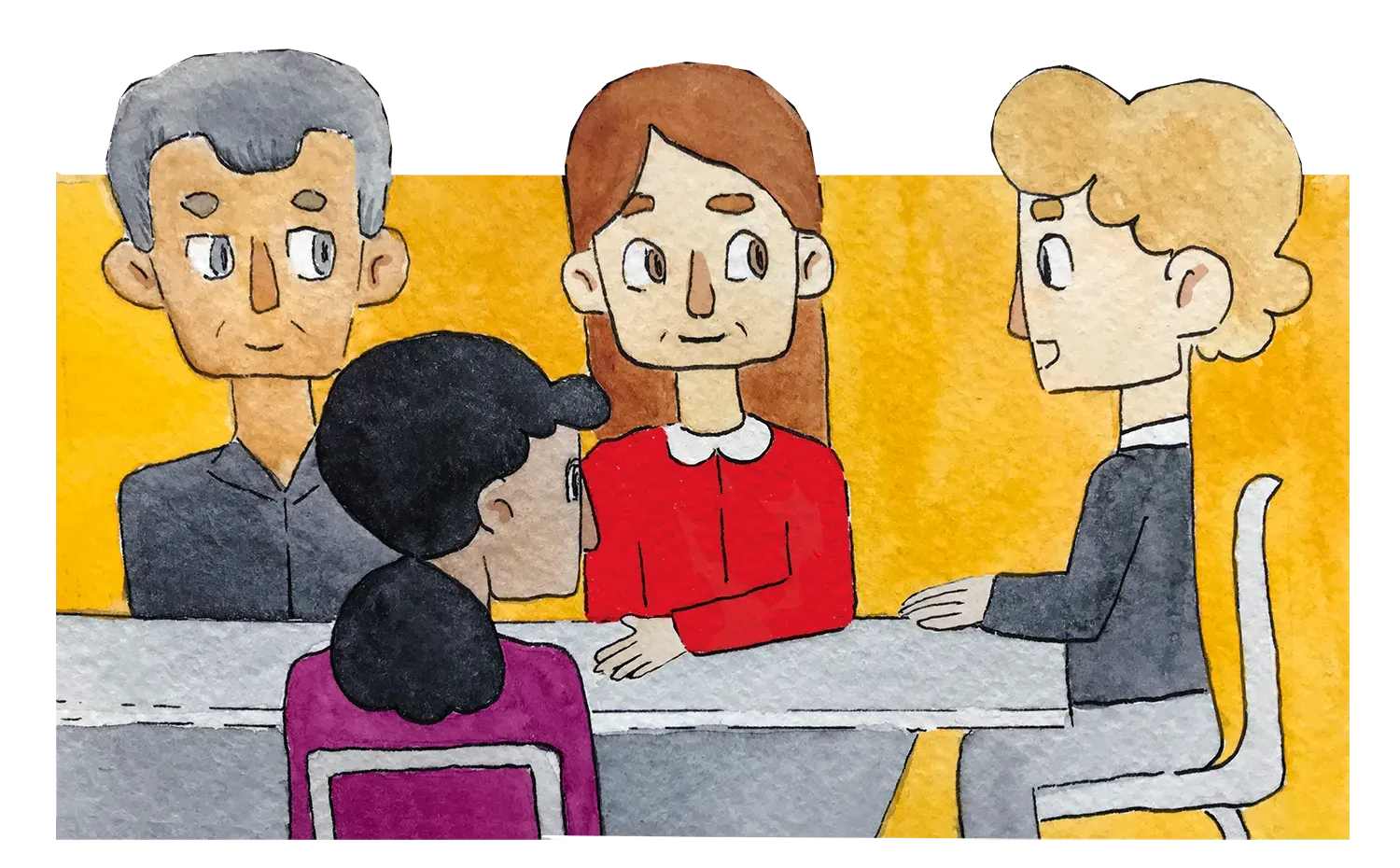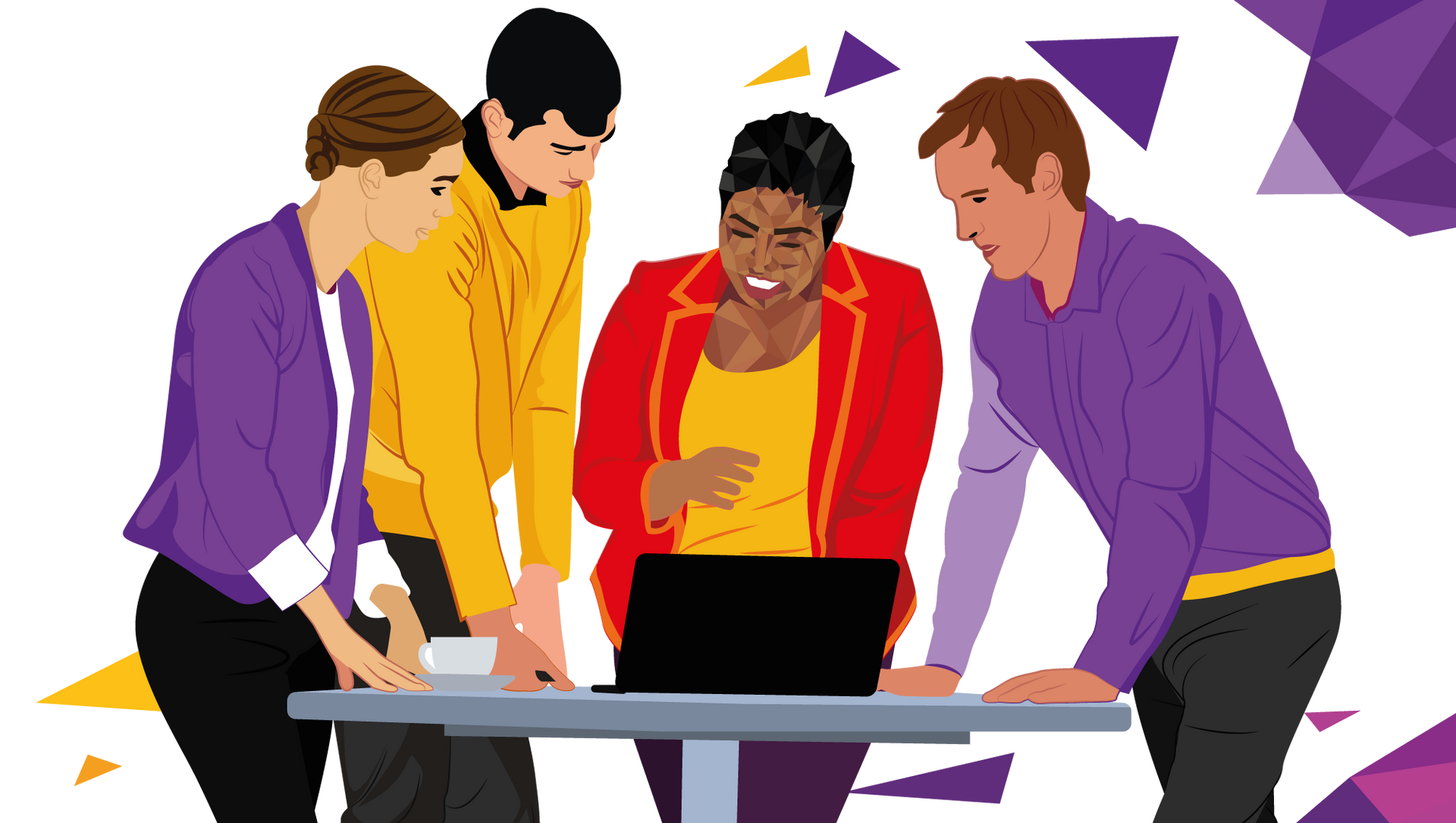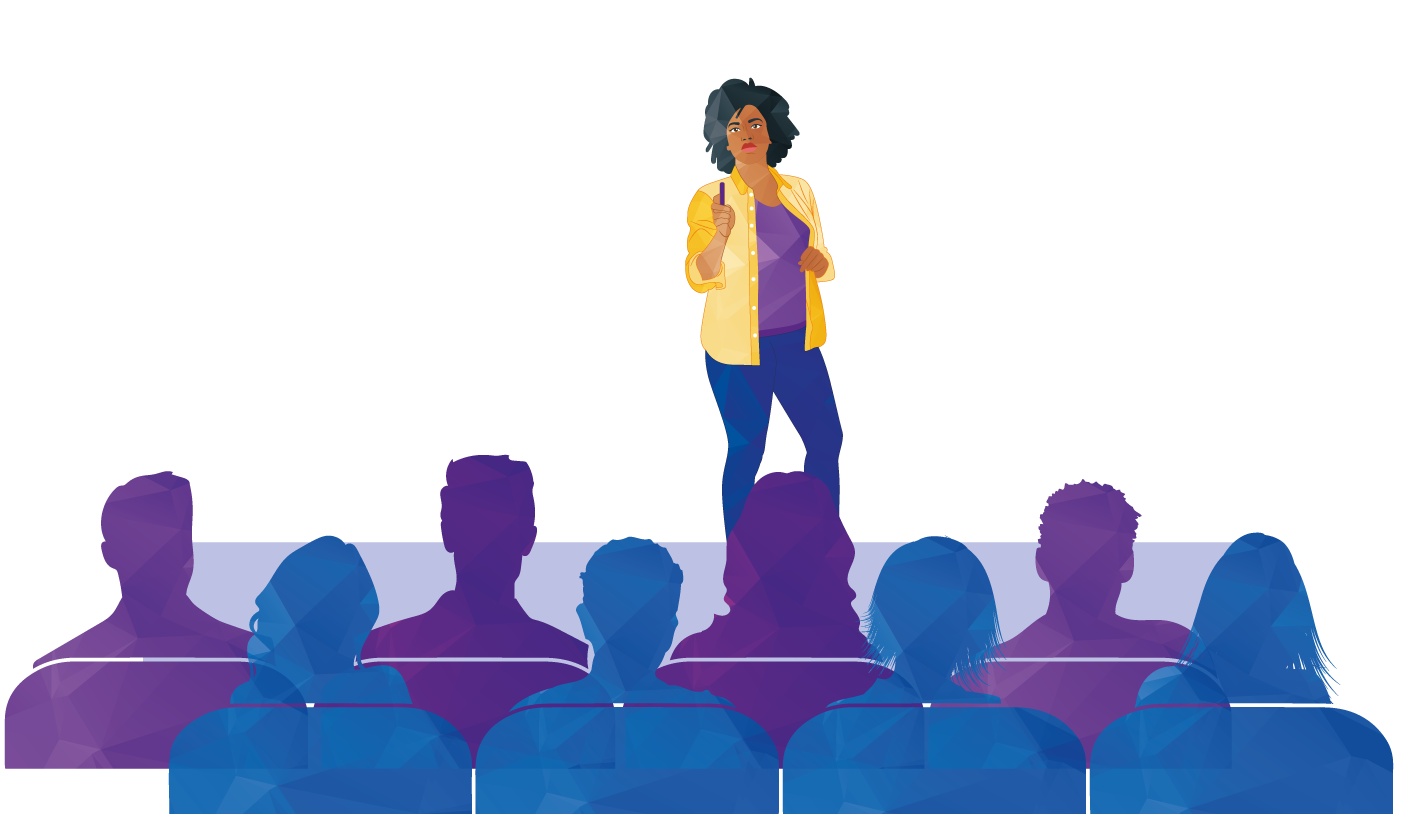Tips for Presenting with a Mask

As a business, we had zero in-person events scheduled between March 2020 and June 2021. As we became vaccinated against COVID-19, and many in the community became protected as well, we started hearing from clients that were hopeful and interested in gathering in-person, while still taking precautions to mitigate the virus's spread.
So, we're leading events again, and often, our hosts are asking attendees and facilitators to mask up. Since June, we’ve had the opportunity to lead our Influential Storytelling workshop in-person several times, and many of those times we facilitated while wearing a mask. Along the way, we’ve learned a thing or two about how to facilitate or present with a mask on; what to pay attention to, what to keep in mind, and best practices to take to heart.
Here are a few of our learnings:
Plan Your Hello
People are using different greeting strategies in lieu of a handshake. Decide in advance how you will greet folks. Consider a fist bump, elbow bump, wave or something else. What’s important is that you find a way to say hello and welcome people. Many people are edgy or uncomfortable about meeting in-person in the first place, and then masks can add to their discomfort and make them feel isolated. Do your best to make the space comfortable and inviting with a warm welcome as they enter.
Consider a Microphone
While wearing a mask, voices are muffled and muted. Yelling to counterbalance these effects is not the answer. Consider wearing a microphone—even with a small group—so that you don't risk losing your voice and can be heard comfortably without sounding like you’re angry. Additionally, if you have a microphone on, you can repeat the comments others in the room make to ensure those comments are heard by the entire group.
Slow Down and Enunciate
Enunciating is especially important due to the muffling effect of a mask. Speaking slowly, separating your words, and ensuring you really do pronounce your Ts and Ds with intention will help your audience hear and understand you. Avoid letting your words slide together and give your audience a chance to pick up what you’re saying.
Choose Your Mask Wisely
Not all masks are created equal. They all fit your face a bit differently, some will slide around, some pinch your ears, some fog up your glasses. When presenting, the last thing you want to do is fidget incessantly with your mask. Make sure you wear a mask that fits you comfortably for several hours and allows you to talk without it sliding around your face. Some folks may prefer that you wear a clear mask to allow people to see your mouth as you speak. This is a great idea if it helps folks who are hard of hearing or non-native speakers, but it may cause moisture build-up that you’ll want to be prepared to address.
Be Expressive
There are many ways you can reinforce the meaning of what you’re saying and you don’t need to rely on your entire face for this. Be intentional about the use of your body and hands to support your communication and indicate warmth and openness. Also, even though your mouth is covered, continue to smile when appropriate as your smile still shows up in your eyes and eyebrows.
Leverage Live Captioning
This is an accessibility practice that is used often for virtual events to accommodate those who are hard of hearing. At our last in-person event, our client offered to set it up for the in-person group. We connected a single computer to a projector, logged into a 1-participant Zoom meeting, and turned on closed-captioning. The computer’s mic did an impressive job of picking up what was said and translating that in real time to the written word. There are likely several closed-captioning technology solutions out there, so consider this as an option to address the muffling and muting effects of masks.
Check for Understanding
Find plenty of opportunities for folks to ask questions and get clarity if they did miss something. Questions like “What questions do you have?” and “What do you need me to clarify?” are important for you to ask often.
What else?
These are some of the preliminary thoughts and ideas we’ve put together for ourselves as we plan to facilitate more in-person experiences while wearing a mask. What have you noticed is helpful or worth considering?





